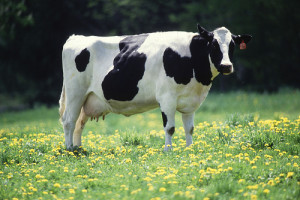Genome research in animals used in agriculture has progressed rapidly in recent years, moving from rudimentary genome maps to trait maps to gene discovery. Genetic engineering of livestock is expected to have a major effect on the agricultural industry. Early attempts to construct whole-genome maps of livestock species were based on the two technologies underlying the first human genome maps, somatic cell genetics and in situ hybridization.
Genetic gain is one mechanism to achieve increased efficiency and there is the opportunity to utilise the scientific advances in genomics. Three ways in which genomics can be used are in additive genetic improvement, exploitation of non-additive genetic variance and management which exploits genotype by environment interactions to optimise management. Genomic selection is widely implemented in dairy cattle and beef cattle and sheep. Genetic change in livestock is one source of gain in efficiency. The genome revolution sweeping genetics and biology provides new knowledge and new tools that can be applied to livestock production.
There is a strong need to increase the biological efficiency of livestock production to meet the rising costs of inputs expected in the future. Long-term genetic improvement, using genomics and reproductive technology, could achieve part of the increased efficiency needed. The increasing demand for milk and meat will come from non-traditional markets in developing countries and it is difficult to anticipate the exact requirements of this trade, other than low cost. Therefore, there is a need to respond to methods relatively quickly to take advantage of markets with specific requirements. Shorter-term genetic improvement, together with breed selection, mating plans and individual management, could generate cattle and sheep suited to these market opportunities.

